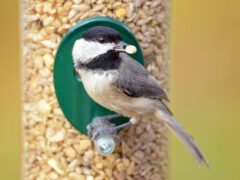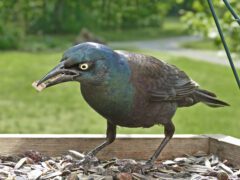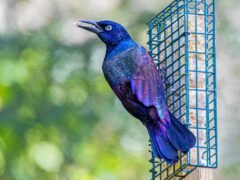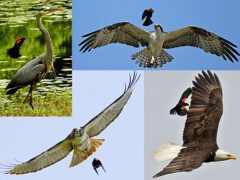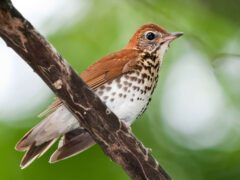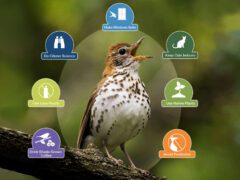Burrowing Owl Photo Gallery
Adult
Small, long-legged owl that is active during the day. Adults are mottled brown and white with yellow eyes and a yellow bill. Birds in Florida and the Caribbean tend to have whiter spots than western Burrowing Owls.
© Christopher Lindsey / Macaulay LibraryCalifornia, September 13, 2020Adult
Long-legged owl with a flat headed look. Mottled brown and white with yellow eyes and a yellow bill.
© Ken Chamberlain / Macaulay LibraryOregon, May 26, 2017Adults
Burrowing Owls use open grasslands, deserts, prairies, and agricultural areas throughout North and South America.
© Jay McGowan / Macaulay LibraryGuárico, December 24, 2012Not all videos have soundAdult
Hunts on or near the ground during the day.
© Kirk Swenson / Macaulay LibraryCalifornia, December 04, 2016Adult with immatures
When developing, young birds can stand upright and walk at about 2 weeks of age. Juveniles typically stay near the nest burrow until they join the parents to forage at dusk .
© Timothy Barksdale / Macaulay LibraryMontana, July 01, 2001Not all videos have soundJuvenile
Nests in underground burrows. Juveniles stick together near the nest burrow for several weeks after hatching. Note unmarked pale belly.
© Carol Riddell / Macaulay LibraryWashington, June 03, 2015Adult
Nests in underground burrows in open, treeless areas with low, sparse vegetation.
© Nancy Westfall / Macaulay LibraryColorado, April 02, 2017Adult
Burrowing Owls typically self-preen, although it is not uncommon for mates to preen each other.
© Brian Sullivan / Macaulay LibraryCalifornia, February 27, 2013Not all videos have soundAdult
Found in grasslands, deserts, sagebrush flats, golf courses, pastures, agricultural fields, airport medians, road embankments, cemeteries, and urban vacant lots. Often perches on fence posts or other elevated structures.
© Henry Burton / Macaulay LibraryOregon, May 19, 2017Adult
Burrowing Owls are mainly crepuscular foragers, meaning that they hunt at dawn and dusk. Some common food items include grasshoppers, crickets, mice, and voles, but they generally consume anything that they can physically handle.
© Timothy Barksdale / Macaulay LibraryMontana, June 01, 2001Not all videos have soundCompare with Similar Species
Click on an image to compare
Species in This Family
Owls(Order: Strigiformes, Family: Strigidae)
More to Read
Don't miss a thing! Join our email list
The Cornell Lab will send you updates about birds,
birding, and opportunities to help bird conservation.




















